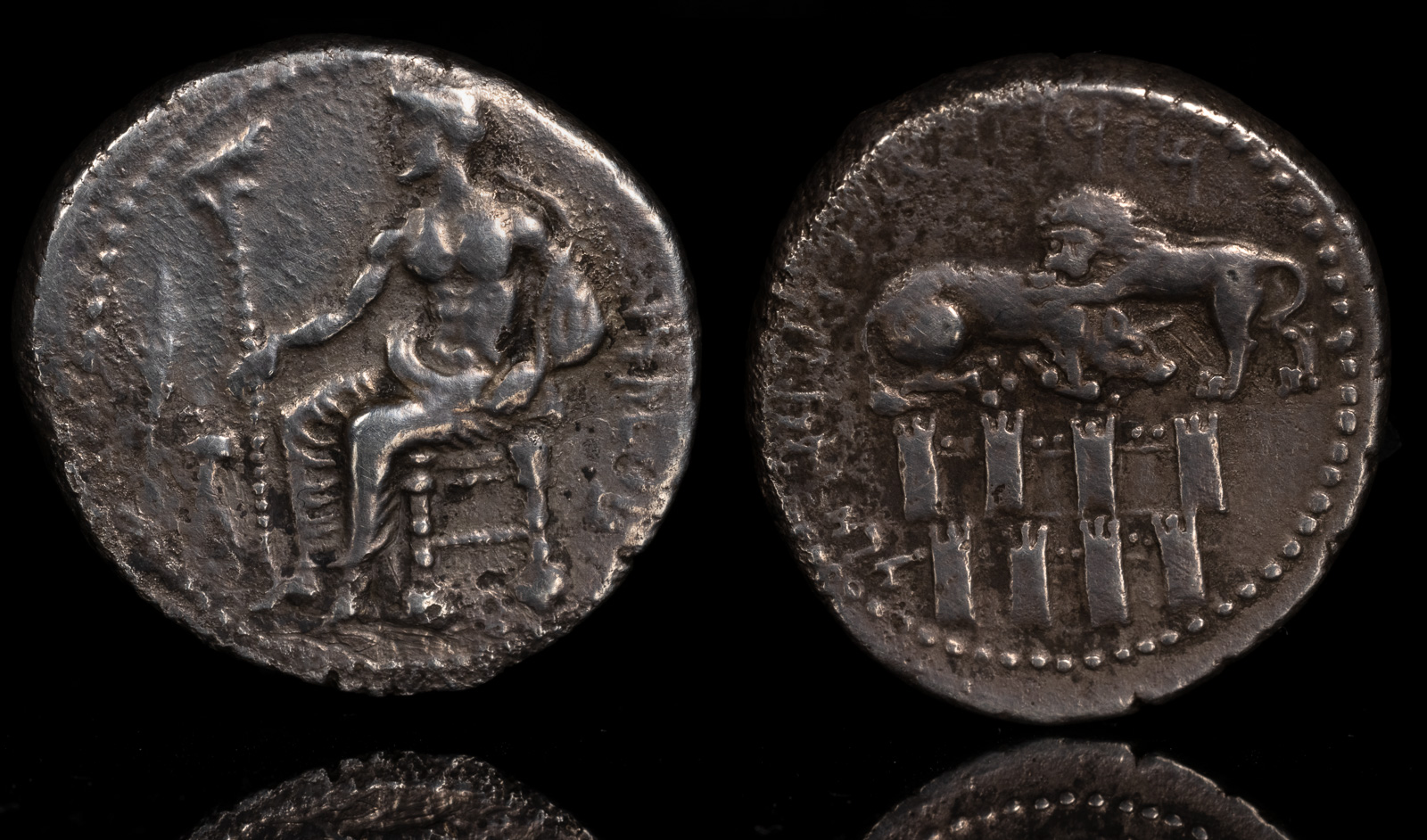
Tarsos. Mazaios, Satrap. Circa 361-334 BC. AR Stater.
Baaltars seated left, holding sceptre surmounted by an eagle in right hand,
left arm at side; grain ear, bunch of grapes to left, monogram under throne
/ Lion attacking bull above double row of turreted walls.
10.11g
SNG Levante 113; SNG France 360
When I noticed this Mazaios stater, it was too amazing to pass up. First, it has the traditional lion taking down a bull. Then there’s the speculation that it was the inspiration for Alexander the Great‘s famous silver coinage. Finally, there’s the city walls, which David Hendin suspects are the newly completed walls of Jerusalem. Those three things together on one coin were too much for me. 🙂
But, getting to the walls, Hendin refers to the text “Ebra Nahara” on the coin, which means “the other side of the river.” This term is often used in biblical terms for Judea. If so, then this would be a depiction of the second temple.
However, this has raised several questions for me. Among them are:
Let’s suppose this is Jerusalem. Then, is this the oldest surviving depiction of the city of Jerusalem?
If these are the walls of the second temple, are there any other images of it from before it was destroyed?
Note that Balakros minted similar coins, but with his signature club.
Mazaios himself served as a key general of Darius III, and was effective against Alexander‘s troops in the Battle of Issus. In fact, he was more than holding his own against Parmenion, and it’s fair to say that only the flight of Darius III prevented Mazaios from defeating the Macedonian’s left flank.
Perhaps not happy with how his king fled, but also aware of the new lay of the land, Mazaios surrendered Babylon to Alexander and was made satrap of Babylon.
Mazaios is born.
Approximate year when Mazaios becomes satrap of Cilicia.
Artaxerxes III Okhos sends his satraps Belesys and Mazaios to retake Sidon, Tyre, and Byblos. The Persians are defeated by the Phoenicians, supported by Nektanebo II and Mentor of Rhodes.
Mazaios is ordered by Darius III to prevent Alexander III from crossing the Euphrates, but he doesn’t have the numbers to accomplish this.
October 1
Alexander the Great defeats Darius III at the Battle of Gaugamela. Mazaios serves on the right flank of Darius.
October 21
Mazaios surrenders Babylon to Alexander III and he enters triumphantly. Mazaios is appointed satrap of Babylon.